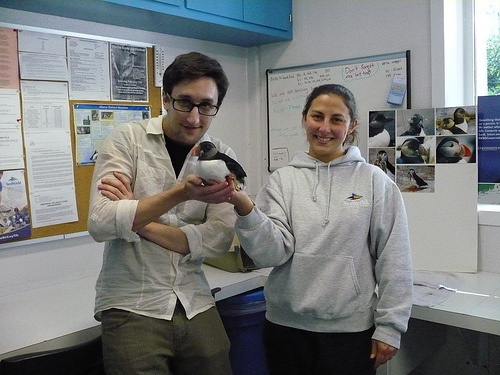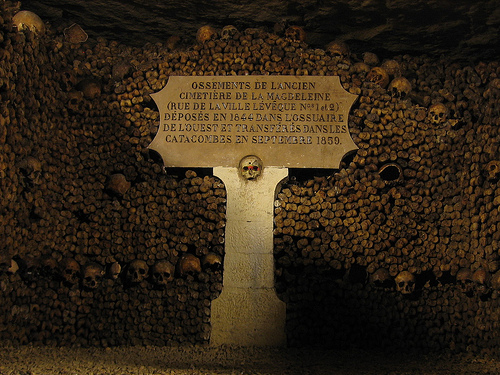An Escapologist’s Diary. Part 22.
It’s been a busy month for this Escapologist. Can’t help feeling that life would have been less exhausting if I’d kept my job. Of course, it wouldn’t have been half as fun, as this diary entry will hopefully show.
When my partner and I first met, she half-jokingly told me that her life’s ambition was to pet a penguin. Romantic idiot that I am, I’ve been looking for penguin-petting opportunities ever since.
It seems to be a fairly popular ambition, but difficult to achieve. Most wildlife sanctuaries forbid it. The little zoo in my home town of Dudley wouldn’t make an exception and a zoo in Edinburgh, famous for a pretty undignified ‘penguin parade’, would not permit it either. In fact, there are probably only two or three places in the world – short of visiting Antarctica – that allow laypeople to handle the proud flightless birds.
A behind-the-scenes research centre at Florida’s Sea World theme park extends a rare opportunity to meet penguins. When we went to Florida this month, ostensibly for a family wedding, I was able to arrange the long-anticipated penguin encounter as a special treat.
The King Penguin we met was a very regal little bird but didn’t seem to mind being touched by humans at all. He was also a very solid and muscular fellow. I hadn’t anticipated how soft and feathery he would be either: I’d imagined his texture would be ‘fatty’, like a wet suit or certain types of fish. It goes to show that you have to experience these things to know. Later, I also had the privilege of meeting a puffin.


Also in Florida, we paid an obligatory trip to what my friend Frasier calls ‘The Insidious House of Mouse’. I came here as a ten-year-old with my sister and parents, making the most of our inheritance from my late Uncle George. We had a brilliant time here as children.
Predictably, I enjoyed it less this time around, but it was still fun to see the (actually quite breathtaking) animatronics at the Hall of Presidents and the funny, outdated and sexist Carousel of Progress. I also broke a habit of a lifetime by going on a roller-coaster called Big Thunder Mountain. I suppose I’d become tired of being the person left holding the drinks while everyone else goes on the nauseating ride. I didn’t enjoy the roller-coaster but I’m glad I went on it.
Later, completely randomly, we bumped into our friend John Hefner – fellow Dyonesian comedian and cousin of recently remarried Playboy mogul Hugh Hefner. As they say in Disney, it’s a small world after all.

Shortly after our return from Florida, I spent a few days in Paris, France. Even though I used to live a mere train journey away from Paris, I’d never visited before. The object of this trip was to attend an important interview as part of my ongoing quest to achieve permanent resident status in Québec. I’m relieved to report that the interview was a success. This left the rest of the weekend to explore Paris.
In Paris, I was able to meet up with Tim, the chief typesetter of New Escapologist, who kindly came over from London to see me. We enjoyed something of an Escapologist’s day out with Tim exercising his Existential free will by hopping onto a Eurostar train at a moment’s notice. We stumbled upon L’Hotel – the death place of Oscar Wilde – as well as more deliberately visiting some of the more famous Paris landmarks such as the Louvre and the Arc de Triomphe.
Flavour was added to the trip by reading The Walkable City by Mary Soderstrom. It contains a lot of information about how Paris was redeveloped in the 19th century by Baron Haussmann under Napoleon III. I was able to visit the sites featured in the book. This, as Tim writes in New Escapologist Issue One, is part of the value of travel: to have real-world comprehension of what you read in books.

The hotel in which I stayed was a cheap but practical two-star affair in the heart of the Bastille. Talk about Bohemian paradise. Every other building is either a pâtisserie serving the best coffee in the world, or a site of immense cultural significance.
Probably my favourite experience in Paris was a visit to l’Ossuaire Municipal: the Catacombs. I hadn’t been sure that the famous ones – stacked floor to ceiling with bones and skulls exhumed from various Parisian cemeteries – were open to the public any more. I’d heard that some vandals had scattered bones around and they’d consequently been closed for good. I’d also heard that naughty goths had been using the spooky underground vaults as the locations for unauthorised nocturnal horror movie screenings. Whether or not these stories are true, I was lucky enough to see the skulls: the finest Memento-Mori you could realistically hope to see.


A thing about the skulls in those catacombs: there are believed to be the remains of various celebrities and Saints among the rest of the human remains, but there’s no way of telling which skulls once belonged to people of note. Each saint here is anonymous, which is presumably why there’s no sign of religious pilgrimages happening here. I’ve been to loads of Cathedrals and other holy places in Montreal, Rome, Ireland, Prague and elsewhere: places that are trampled by pilgrims because they house the fingernail or the hairpiece of a Saint. Here at the Parisian catacombs there are some very significant remains (entire skeletons) but because of their anonymity, nobody comes to visit them. I suppose it’s not worth the risk of attempting a religious experience using the skull of a smelly French peasant.
Speaking of Memento-Mori, my first order of business upon returning to Montreal was to conduct a journalistic interview with artist Paul Bourgault for a magazine called Side Street Review. We talked about his art and work ethic, but also about how the Bohemians (the subject of pending New Escapologist Issue 5) would keep a skull around the place as a talisman against becoming Bourgeois. Paul showed me how many of his artworks, while generally colourful and beautiful, have little nods here and there to Memento-Mori. We agreed that remembering death is what allows you to live vigorously.
I also recently had the pleasure of interviewing Alain de Botton for New Escapologist Issue 5. You’ll have to buy (or pre-order for now) the magazine to read our conversation. Subjects covered include Bohemia, status anxiety, marriage, philosophy and work. It’s a great, interview, and will be illustrated by Kelly Tindall.
My latest hobby has been learning French. It’s useful here in Montreal, so I’ve been attending a class at the YMCA language school. The people with whom I study are a friendly bunch and the atmosphere in the room is very supportive. My most confidence-boosting experience of late, however, was in Paris. A post office employee showed me how to use the self-service machines, making banter along the way, entirely in French. I held my own pretty well and I was left with a useful hunger to fill in the gaps in my vocabulary.
Since returning from Paris, my penguin-touching girlfriend has been in Toronto, representing her art gallery business at an Interior Design Show. In her absence, I’ve been working hard at learning French and at my freelance writing. Will get around to editing New Escapologist Issue 5 soon, for those of you who are wondering about it. It will be printed and distributed by the end of February.
So, yes. A busy month. Thanks to all the travel, my body clock is quite off-kilter. Poor Tim travels pretty much constantly. His body clock must look like it was painted by Dali.




About Robert Wringham
Robert Wringham is the editor of New Escapologist. He also writes books and articles. Read more at wringham.co.uk